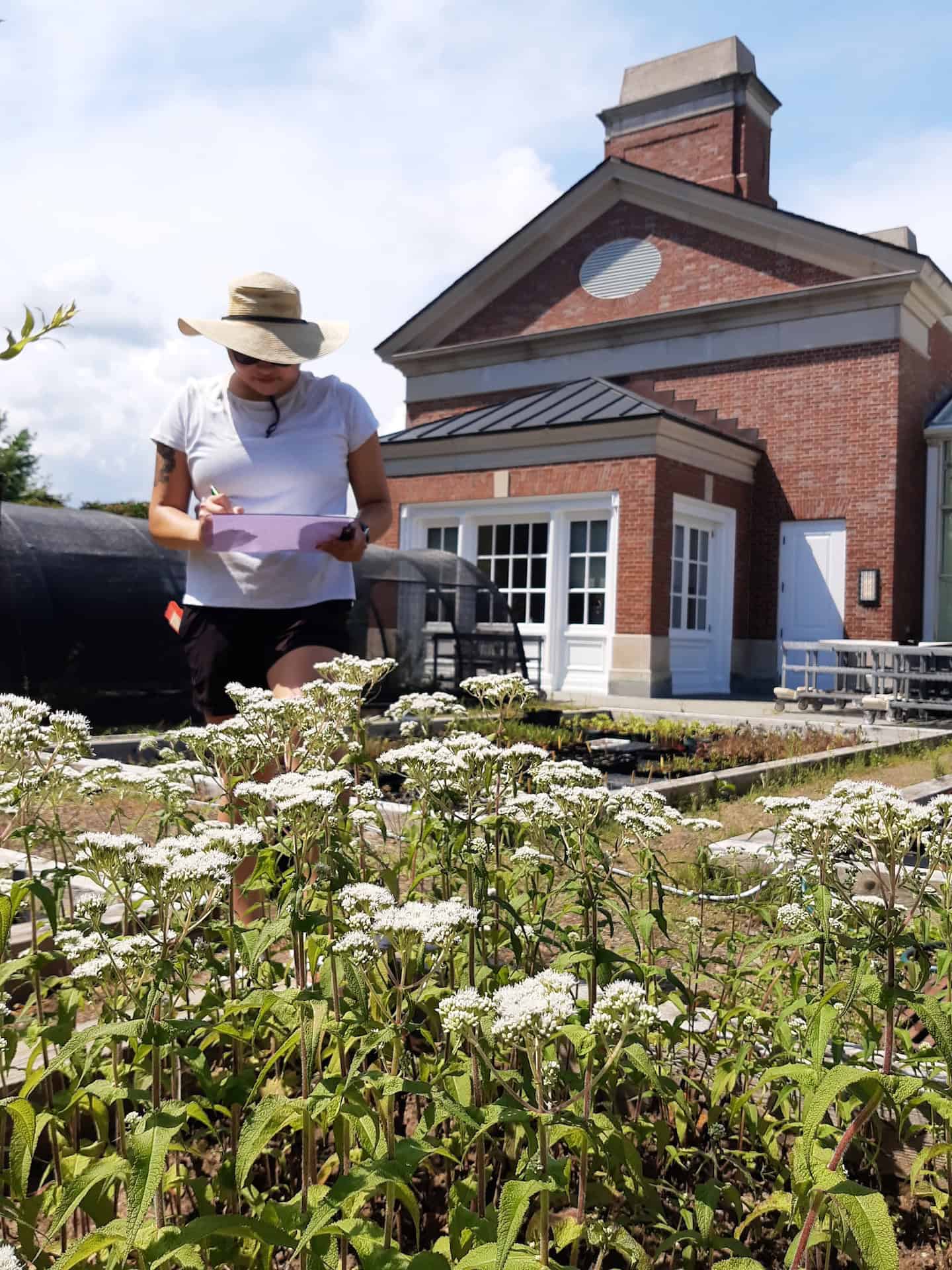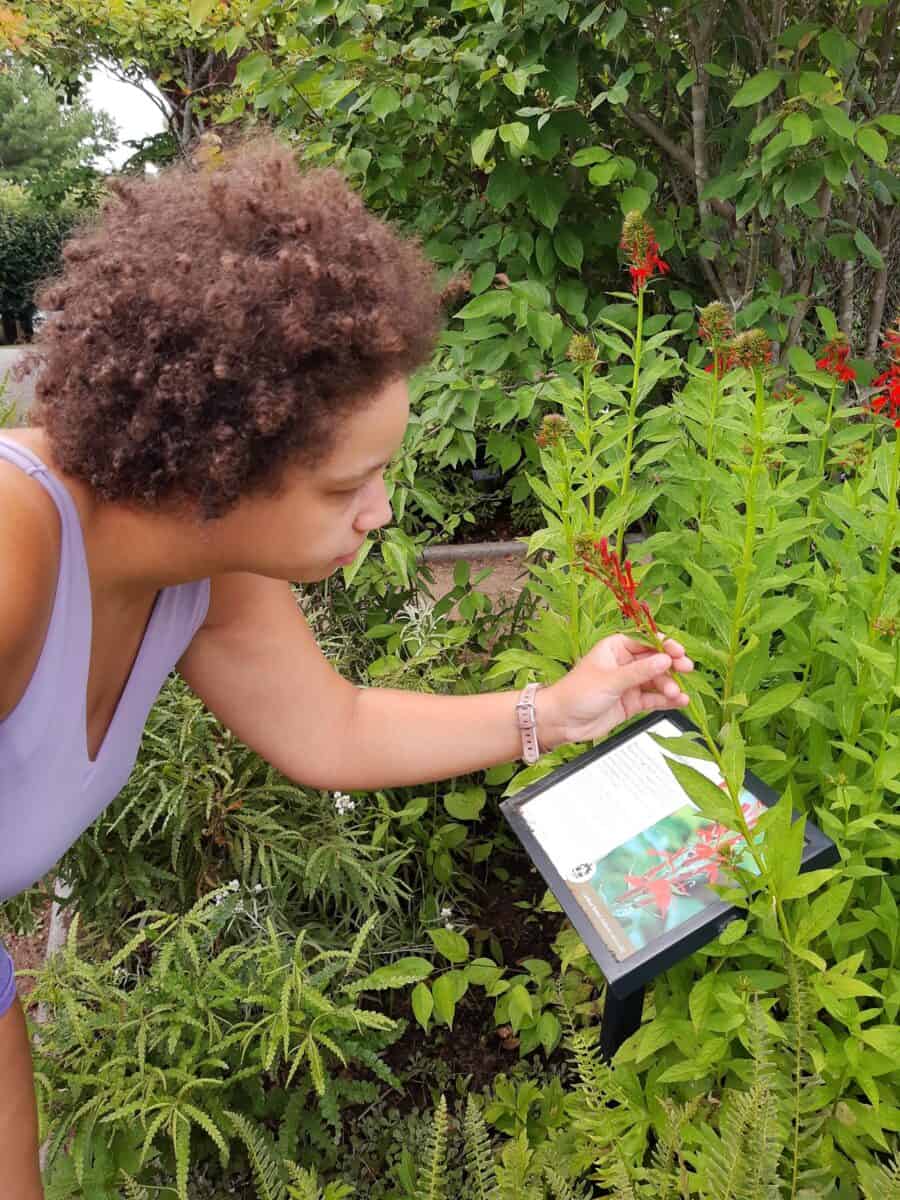
Dr. Zoe Panchen, led exciting research this past summer at the Harriet Irving Botanical Gardens, focusing on monitoring pollinators and native plants as indicators of climate change.
Two research students in her lab, Taya Lucas-Desmond and Savanna Francis, spent the summer diligently collecting data that will help understand how climate change is affecting the region’s natural environment.
Taya Lucas-Desmond dedicated her summer to studying plant phenology (flowering and fruiting times). As part of her honours research in environmental science, she monitored approximately 100 native plants in the Gardens each week. Taya aimed to identify species that might be particularly at risk due to climate change and, therefore, serve as important indicators. Her research focused on tracking changes in flowering times by comparing current plants in the Gardens with historical records from the E.C. Smith Herbarium. Her findings were also contributed to PhenObs, a global network that tracks plant phenology in botanical gardens for research purposes. Taya explained, “It was my hope that by working with PhenObs, I could help make information on species’ flowering times more accessible for future research”.
Savanna Francis is an Environmental Science and Biology double major. As a Mi’kmaw woman, she proudly integrated Etuaptmuk/Two-Eyed Seeing into her research, which combined Western scientific methods with Indigenous ways of knowing. Savanna focused on observing pollinator interactions with native plants, gathering data that would help understand how pollinators—known to be vulnerable to climate change—are responding to environmental shifts. Her project involved collaboration with researchers from Acadia University, the Arnold Arboretum of Harvard University, and the Missouri Botanical Garden.
Savanna monitored native flowers in bloom, recording pollinator visits during 5-minute intervals on sunny, low-wind days. Over the course of the summer, she documented over 1,000 pollinator interactions. This data will provide valuable insights into changes in pollinator behavior over time and their potential links to climate change. Reflecting on her experience, Savanna said, “My favorite part of this work was watching the Gardens evolve in real-time. I spent so much time observing flowers that I could witness each wave of species as they came and went—it was extraordinary to see nature progress with such a deliberate rhythm.”

Dr. Panchen is enthusiastic about the potential for her research program in the Gardens to expand, saying, “This is a fantastic resource, and we’re just at the beginning of our data collection. I’m excited to see where this leads us in understanding the impacts of climate change”.
The Harriet Irving Botanical Gardens and K.C. Irving Environmental Science Centre serve as invaluable resources for Dr. Panchen’s research, providing a diverse collection of native plants from the Wapna’ki (Acadian) Forest Region, which spans the Maritimes and New England.





 Acadia University
Acadia University